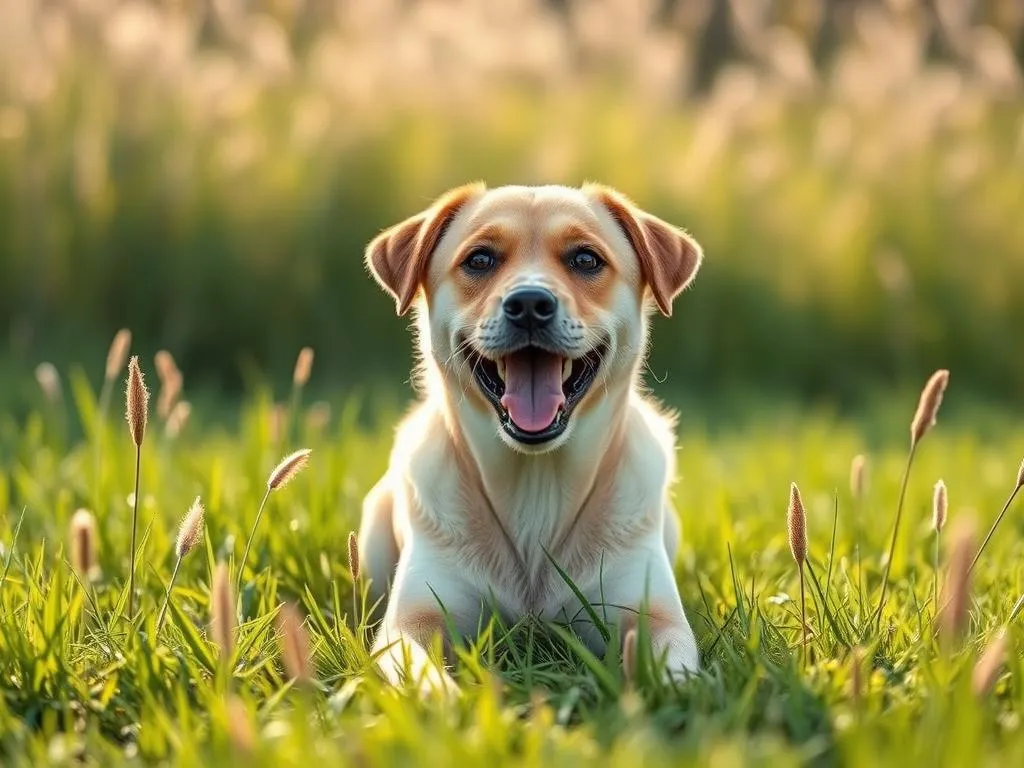
Introduction
For many dog owners, a beautiful lawn is a source of pride and enjoyment. However, the joy can quickly turn to frustration when faced with the damaging effects of dog urine on grass. The high nitrogen levels in dog waste can lead to unsightly yellow patches and dead spots in your lawn, making it essential to choose the right type of grass resistant to these challenges. This guide aims to help dog owners, landscapers, and anyone who cares for a lawn understand the best grasses for dog urine, how to maintain them, and alternative solutions for a thriving outdoor space.
Understanding the Impact of Dog Urine on Grass
The Science Behind Dog Urine
Dog urine primarily consists of water, urea, creatinine, and various salts. While urea is a nitrogen compound that can be beneficial for plants in small amounts, excessive nitrogen can lead to grass burn. This is similar to how over-fertilization can damage lawns. The concentrated nitrogen in dog urine can cause the grass to yellow and die off, which poses a significant challenge for pet owners looking to maintain a lush, green lawn.
Common Symptoms of Grass Damage
When dog urine affects your lawn, the symptoms are often evident. Look for:
- Yellow patches that may eventually turn brown.
- Dead spots where grass has completely withered.
These areas can be starkly contrasted with healthy grass, leading to an uneven and unappealing lawn. Understanding these symptoms can help you take action before the damage becomes irreversible.
Factors Affecting Grass Damage
Not all grass types respond to dog urine in the same way. Several factors contribute to the extent of grass damage, including:
- Grass species: Some grasses are inherently more resistant to urine than others.
- Soil quality and pH levels: Healthy soil can better withstand the effects of nitrogen.
- Quantity and frequency of urine: The more often a dog urinates in one spot, the greater the potential for damage.
Criteria for Selecting Dog-Resistant Grasses
Durability and Resilience
When selecting grass for a lawn frequented by dogs, durability is key. Look for grasses that can withstand wear and tear from active pets and foot traffic. Resilient grasses will not just survive; they’ll thrive, offering a lush green appearance.
Recovery Rate
A grass type’s ability to recover quickly from damage is crucial. Some species can bounce back within days, while others may take weeks or longer. Choosing grasses with a faster recovery rate will help maintain a consistently beautiful lawn.
Aesthetic Appeal
While functionality is important, aesthetic qualities should not be overlooked. The visual appeal of your lawn can enhance your home’s curb appeal and provide a pleasant outdoor space for your family and pets to enjoy.
Maintenance Requirements
Different grass types come with varying maintenance needs. Some may require regular watering, while others may need less frequent mowing or specialized fertilization. Opt for grasses that fit within your desired lawn care routine to ensure long-term success.
Top Grasses for Dog Urine
Kentucky Bluegrass
Kentucky Bluegrass is a popular choice among homeowners due to its lush, dense appearance. It’s known for its cold tolerance and adaptability. However, while it can recover relatively well from dog urine damage, it may require more maintenance compared to some other options. Its ability to spread through underground rhizomes helps it fill in damaged areas, making it a viable choice for dog owners, but you must monitor the watering needs closely.
Perennial Ryegrass
Perennial Ryegrass is another excellent option for pet owners. It germinates quickly and establishes rapidly, allowing for fast recovery from damage caused by dog urine. Its fine texture and rich green color make it aesthetically pleasing. This grass type is also tolerant of foot traffic, making it ideal for active dogs. However, it may require more frequent watering during dry spells.
Tall Fescue
Tall Fescue offers exceptional drought resistance and durability, making it a strong contender for lawns with dogs. This grass type has deep roots that allow it to access water and nutrients more effectively, which aids recovery from urine damage. Its coarse texture is often overlooked, but it can provide a robust lawn that withstands both heavy foot traffic and the effects of dog urine.
Zoysia Grass
Zoysia Grass is well-known for its heat and drought tolerance. This warm-season grass develops deep roots, making it resilient against urine damage. Zoysia grows slowly compared to other grasses, but once established, it can outcompete weeds and recover well from damage. Its thick mat-like growth can also provide a lush appearance throughout the warm months.
Bermuda Grass
Bermuda Grass thrives in sunny climates and is highly resistant to wear. This grass type is particularly good at recovering from dog urine damage, as it spreads rapidly through stolons. Its coarse texture can be a downside for some homeowners, but if you have an active dog and live in a warm climate, Bermuda Grass may be your best option for a durable lawn.
Buffalograss
Buffalograss is a native grass that excels in arid conditions and is drought-resistant, making it a low-maintenance choice for lawns. It is reasonably tolerant of dog urine and can recover well from occasional damage. Its fine texture and soft appearance make it appealing, especially for homeowners looking for a grass that adapts well to varying climates.
Grass Maintenance Tips for Dog Owners
Regular Watering Practices
To combat the damaging effects of dog urine, regular watering is essential. Watering the lawn immediately after your dog urinates can help dilute the nitrogen concentration, reducing the risk of grass burn. Aim for deep watering sessions that encourage root growth and resilience.
Fertilization Strategies
Using the right fertilizer can help balance nitrogen levels in your lawn. Look for fertilizers with low nitrogen content, as high-nitrogen fertilizers can exacerbate damage from dog urine. Additionally, organic options often promote healthier soil and grass growth.
Lawn Care Routine
Establishing a regular lawn care routine is vital. Mow your grass regularly to promote healthy growth and remove any dead patches. Consider aerating your lawn once a year to improve nutrient and water absorption, which can help with recovery from dog urine damage. Overseeding can also fill in any bare spots, ensuring a lush, even lawn.
Alternative Solutions
Dog-Friendly Lawn Alternatives
If traditional grass options seem inadequate, consider alternatives like artificial turf. It requires minimal maintenance and is resistant to urine damage, making it a practical choice for many pet owners. You can also explore low-maintenance ground covers that can withstand urine exposure while providing a green appearance.
Training Dogs for Bathroom Habits
Training your dog to urinate in designated areas can significantly reduce lawn damage. Establish a specific spot in your yard where it’s acceptable for your dog to relieve itself. Over time, your dog will learn to associate this area with bathroom breaks, protecting the rest of your lawn.
Additional Products and Treatments
There are various products available that can help mitigate the effects of dog urine on your lawn. Look for lawn treatments specifically designed to neutralize urine, as well as dog urine neutralizers that can help restore the balance of nutrients in your soil.
Conclusion
Choosing the right grass is crucial for pet owners who want to maintain a beautiful lawn despite the challenges posed by dog urine. Grasses like Kentucky Bluegrass, Perennial Ryegrass, and Tall Fescue stand out for their resilience and recovery capabilities. By implementing a solid lawn care routine and exploring alternative solutions, you can enjoy a lush outdoor space that accommodates your furry friends.
FAQs
What is the best grass for dog urine?
The best grasses for dog urine include Kentucky Bluegrass, Perennial Ryegrass, and Tall Fescue. Each offers unique benefits in terms of durability and recovery.
How can I repair my lawn after dog urine damage?
To repair your lawn, water the affected areas thoroughly, aerate the soil, and overseed with a suitable grass type to fill in the bare patches.
Are there any special fertilizers for lawns with dogs?
Yes, look for fertilizers with low nitrogen content that can help balance the soil and prevent further damage from dog urine.
How often should I water my lawn if I have a dog?
Water your lawn regularly, especially after your dog urinates, to dilute nitrogen levels. Aim for deep watering sessions at least once a week, depending on weather conditions.
Can grass types vary based on geographic location for dog owners?
Absolutely. The best grass types can vary based on your climate, so consider local conditions when selecting the best grasses for dog urine.
Encourage your readers to share their experiences or tips in the comments, and invite them to subscribe for more articles on pet-friendly landscaping solutions.









